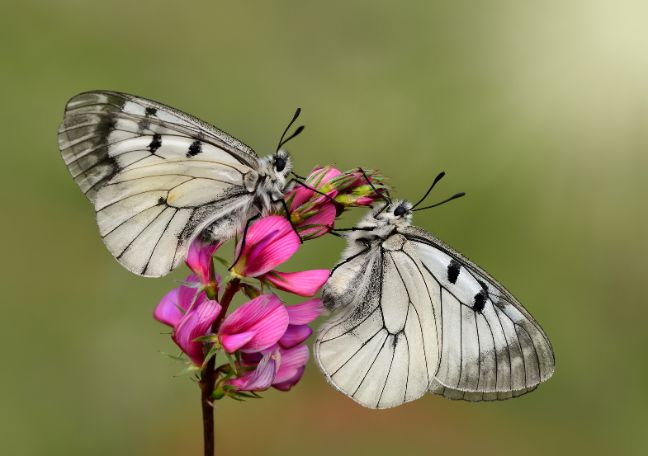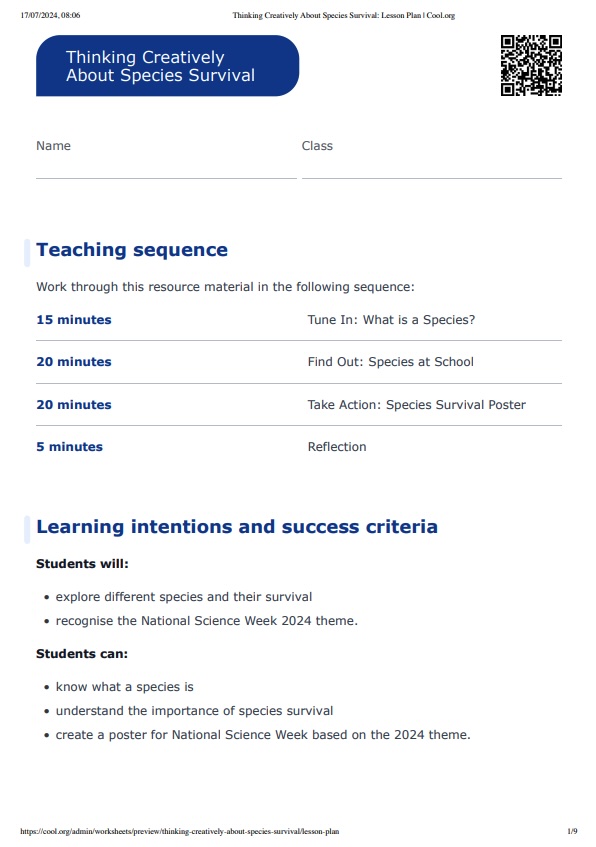Lesson summary
Students will investigate what a species is and why we should be interested in species survival. Students will collect a range of leaves from different plant species and incorporate them into a poster around the theme ‘species survival’.
Learning intentions:
Students will...
- explore different species and their survival
- recognise the National Science Week 2024 theme.
Success criteria:
Students can...
- know what a species is
- understand the importance of species survival
- create a poster for National Science Week based on the 2024 theme.
Lesson guides and printables
Curriculum links
Select your curriculum from the options below.
Lesson details
Skills
This lesson is designed to build students’ competencies in the following skills:
- adaptability
- creative thinking
- critical thinking
- communication
- curiosity
Curriculum Mapping
Australian Curriculum (v9.0) content description:
Year 3 and 4, Science
- compare characteristics of living and non-living things and examine the differences between the life cycles of plants and animals (AC9S3U01)
- write and create texts to communicate findings and ideas for identified purposes and audiences, using scientific vocabulary and digital tools as appropriate (AC9S3I06, AC9S4I06).
Relevant parts of Year 3 and 4 achievement standards: Students can classify and compare living and non-living things and different life cycles. Students communicate ideas and findings for an identified audience and purpose, including using scientific vocabulary when appropriate.
NSW Syllabus outcomes:
- examines how the environment affects the growth, survival and adaptation of living things (ST3-4LW-S)
General capabilities: Critical and Creative Thinking, Literacy
Cross-curriculum priority: Sustainability
Level of teacher scaffolding: High - lead students in class discussions and guide students in an outdoor task. Oversee and support students to create their posters.
UN Sustainable Development Goals
- Target 15.5: Take urgent and significant action to reduce the degradation of natural habitats, halt the loss of biodiversity and, by 2020, protect and prevent the extinction of threatened species.
Resources Required
- Poster-making materials (poster paper, textas, markers and pencils).
Additional Info
This is an original Cool.org lesson.
Related Professional Learning
What Makes Something Threatened?
Quick Summary: This course explores biodiversity and threatened species within Australia with Ecologist Thomas Nixon. The course will help you discover how biodiversity is regulated in Australia, and how you can take action to protect our unique biodiversity.


Welcome back!
Don't have an account yet?
Log in with:
Create your free Cool.org account.
Many of our resources are free, with an option to upgrade to Cool+ for premium content.
Already have an account?
Sign up with:
By signing up you accept Cool.org's Terms and Conditions(Opens in new tab) and Privacy Policy(Opens in new tab).